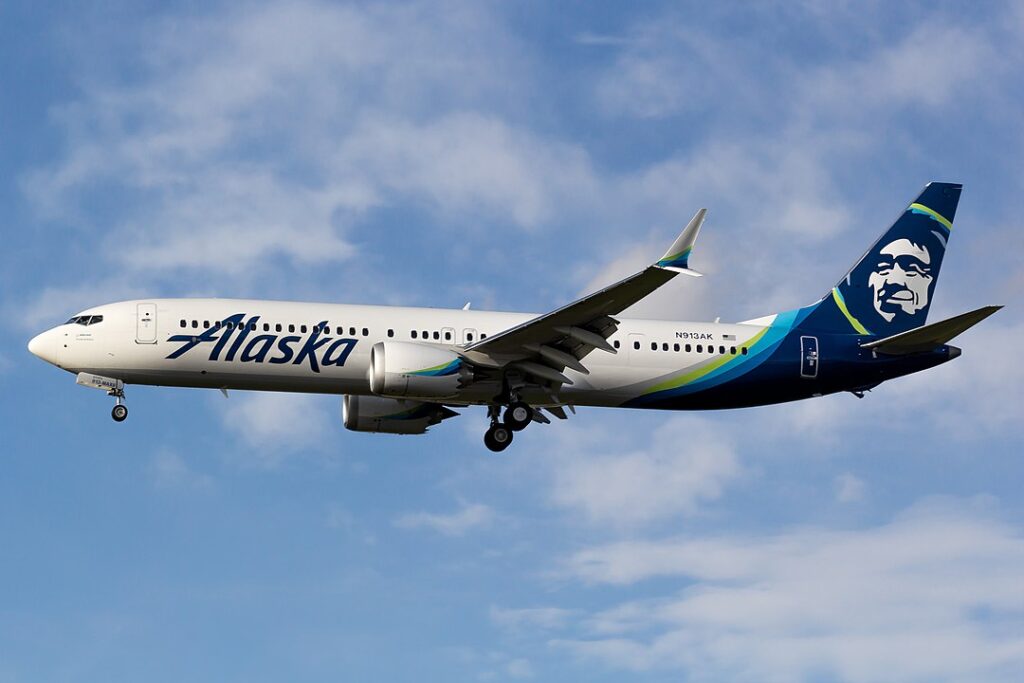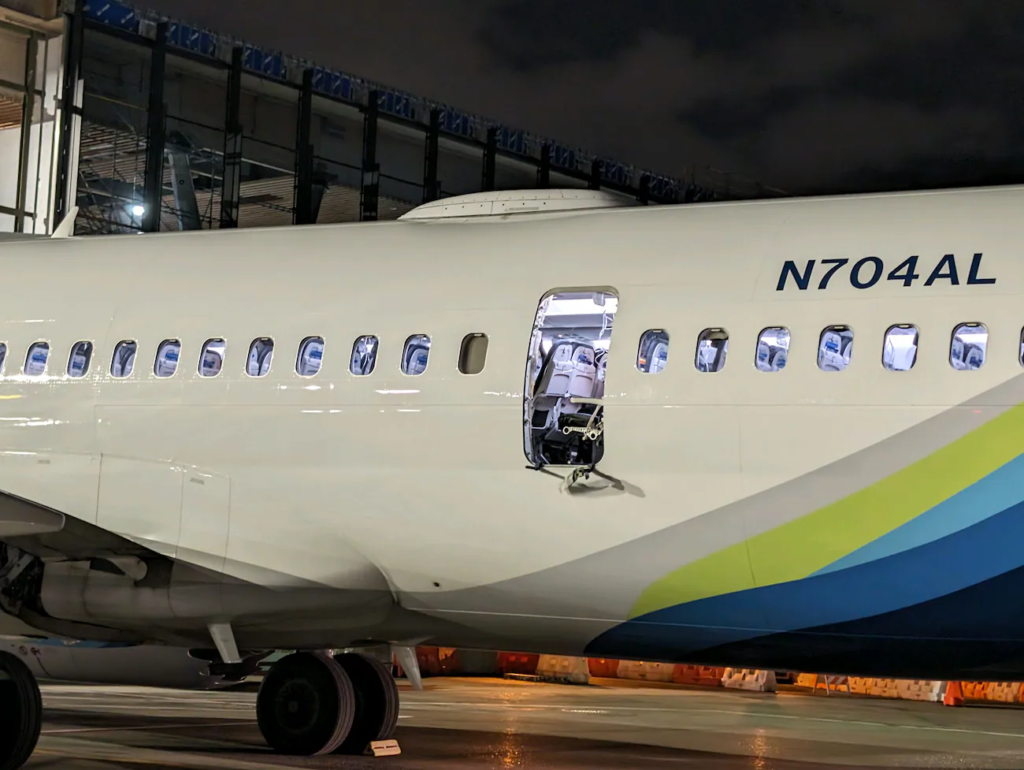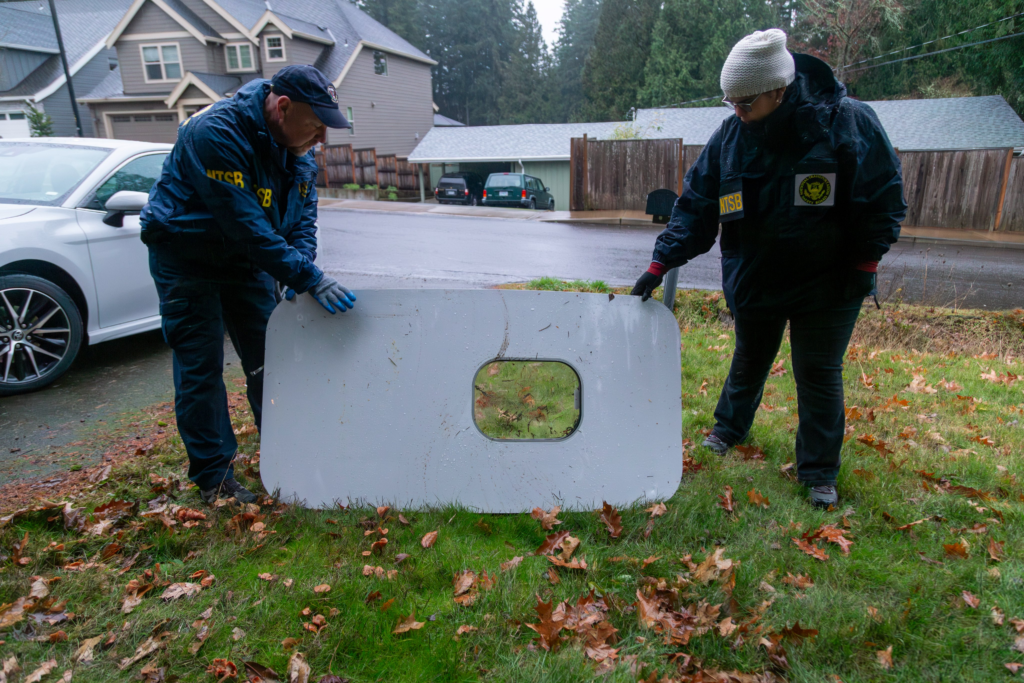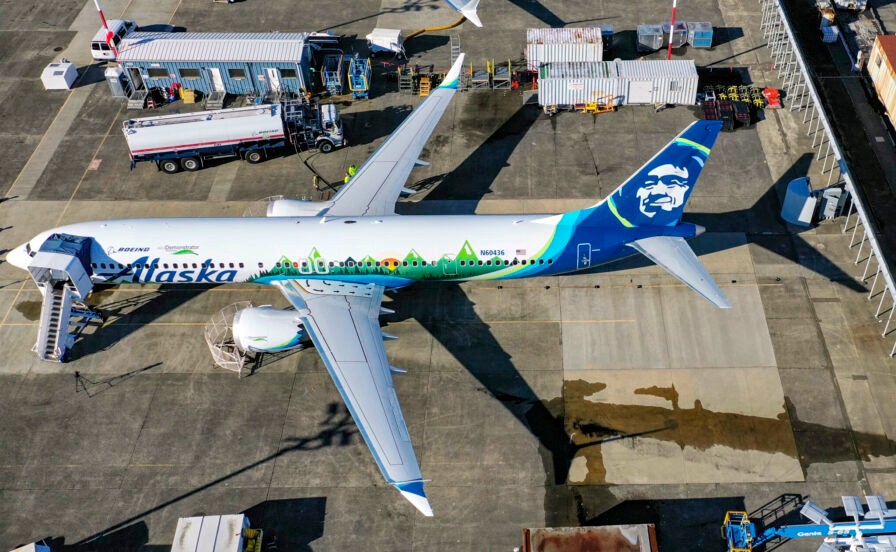SEATTLE- Six Alaska Airlines (AS) passengers have filed a lawsuit against Boeing following a harrowing flight experience where a door plug dislodged at 16,000 feet, necessitating a dramatic emergency landing in Oregon.
A family member of one of the passengers aboard Flight 1282 has joined the class-action lawsuit in King County Superior Court in Seattle, filed on Thursday.

Alaska Airlines Passengers Sue Boeing
The lawsuit asserts that the passengers are entitled to compensation for injuries sustained during the incident.
“While everyone is relieved that the blowout occurred when the crew could still safely land the aircraft, this traumatic experience has resulted in economic, physical, and ongoing emotional consequences that have understandably deeply impacted our clients. It is yet another distressing incident involving the troubled 737-MAX series aircraft,” stated attorney Daniel Laurence, representing the passengers, in a released statement.
The legal action follows Alaska Airlines’ offering of a modest $1,500 to passengers for their ordeal during the flight. The specific amount sought by the plaintiffs in the newly filed class-action lawsuit remains undisclosed.
In a prior statement, Boeing expressed its dedication to ensuring that every Boeing airplane adheres to design specifications and the highest safety and quality standards.
Boeing also conveyed regret for the impact the incident had on customers and their passengers in a statement on Monday.

Door Blowout Incident
On Friday night, a Boeing 737 Max 9 departed from Portland, Oregon, en route to California. However, just 20 minutes into the flight, the aircraft’s door ‘plug’ blew out at 16,000 feet and descended to the ground.
The incident prompted a distressing emergency landing, with passengers fearing they were bidding farewell to their loved ones. The flight carried 171 passengers and six crew members when the part dislodged.
Federal officials spent several days searching for the missing plane parts to aid in their investigation. As a precautionary measure, authorities ordered similar planes to be grounded during the investigation.
The lost door plug was eventually discovered by Bob Sauer, a 64-year-old physics teacher from Portland High School, in his backyard on Sunday night – days after the occurrence.
Sauer recounted that he used a flashlight to survey his tree-filled yard that night and noticed “something gleaming white underneath the trees in the back that isn’t normally there,” as he shared with Reuters on Monday.
Bob Sauer, a science teacher at Catlin Gabel School, discovered the 26-by-46-inch, 63-pound panel referred to as a mid-cabin door plug. This panel is utilized to replace an exit, commonly installed on planes configured to accommodate more passengers.
The panel has been sent to an NTSB lab in Washington for a thorough examination, as confirmed by the agency.
Sauer, whose trees acted like an airbag, believed the door plug sustained no damage during the fall. Notably, he was absent when the door plug would have landed, so he did not hear any sounds associated with the incident.
In a separate interview with Good Morning America, Sauer mentioned exercising caution not to touch the plug before the NTSB arrived.

Finding Lost Parts
Initially, investigators sought assistance in locating the door plug after the incident, indicating they believed it was in Cedar Hills—the location where it was eventually discovered. Cedar Hills is situated in Washington County, Oregon, approximately seven miles west of Portland.
Around the same time the missing door was found, Alaska Airlines announced the cancellation of 170 flights on Sunday and another 60 on Monday to facilitate aircraft inspections by investigators.
Subsequently, it was revealed that the aircraft had been prohibited from long-distance flights over water after a cabin pressure warning light illuminated on three previous flights.
Pilots had reported the warning lights indicating some loss of cabin pressure. Still, Alaska Airlines asserted that these issues were documented and resolved “per approved maintenance procedures,” as reported by the Seattle Times.

No Cockpit Voice Data
Federal investigators have reported the loss of in-flight voice recorder data as it was not reset within a two-hour window following the emergency landing.
A cockpit voice recorder is a standard feature on all aircraft, designed to capture the voices of the flight crew and all sounds in the cockpit.
As per the NTSB website, this device can record up to 25 hours and is reset every two hours. Due to not being reset in time, the content of conversations during the emergency remains unknown.
The National Transportation Safety Board investigators have expressed gratitude for the miraculous survival of all passengers and crew members on board the Boeing 737-9 Max.
The thorough examination of the unusual event, which led to one person sustaining non-life-threatening injuries and prompted Alaska Airlines to ground numerous Boeing 737-9 MAX jets for urgent safety checks, began on Sunday.
Following this incident, several other airlines have also opted to ground aircraft of the same model, citing concerns related to previous deadly crashes and system failures involving this type of jet in recent years.
Stay tuned with us. Further, follow us on social media for the latest updates.
Join us on Telegram Group for the Latest Aviation Updates. Subsequently, follow us on Google News.

